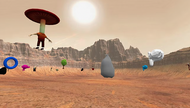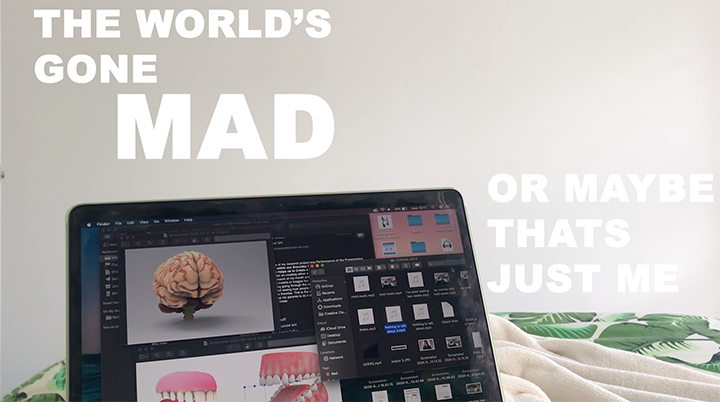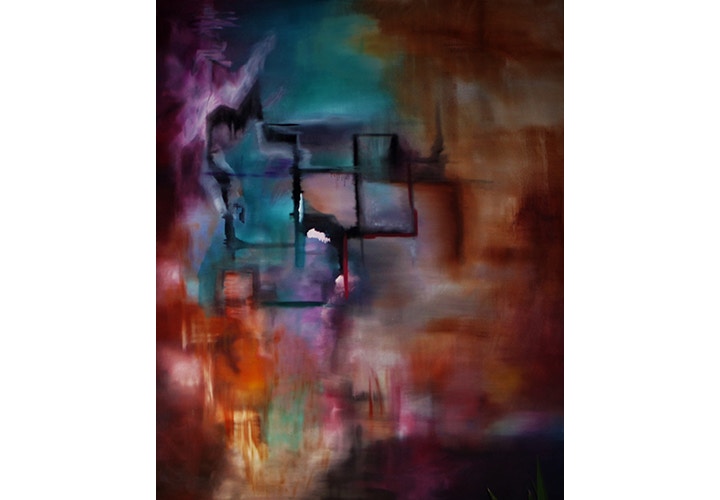Liverpool John Moores University: Degree Show on Mars!
Posted by Cass Art on 15th Aug 2020
Summers in Art Schools are a time for anticipation and celebration, setting up for degree shows, exhibition openings and performances. This summer might look slightly different for art schools as studios remain closed and exhibitions moved online – but there is still a lot of creative talent to celebrate. Art students, whatever their stage of education, are the future of our creative industries – and their dedication and tenacity at this time is an inspiration.
One Art department that embraced the need to approach a distanced digital degree show were the students at Liverpool John Moores University. They didn't just run with an idea, they ran, strapped into a rocket and took off to outer space! Explore their innovative, exciting and thought provoking Degree Show on Mars! We caught up with five of the participating students about how they've coped with graduating during a pandemic and how each of them have embraced their new interstellar art practice.
Blast off to the Degree Show on Mars! - just watch out for black holes!

At Cass Art we are inspired by the way that LJMU students embraced the immense challenge they, like other creative students, were faced with this summer. A degree show on mars! What a unique, engaging and frankly – uplifting, approach to the necessity of a digital platform. How did the concept progress?
Emma Dolan: Luckily as students at LJMU we’ve had plenty of experience of adapting to strange spaces for shows, so Mars came as an exciting new challenge. Addressing the pandemic was something I found was important to me as my practice is built around real world experiences, however this might not have been important for others, so having a unique site each after travelling through wormholes via our crazy objects on mars was perfect for us.
Phoebe O'Connor: The concept of A Degree Show On Mars came about because Covid-19 turned our planet upside down, so we held our show on a completely different planet altogether! We all loved the originality of the idea and how viewers would be transported through different portals... the first being our floating objects on the surface of Mars, the second a virtual walkthrough of our last physical exhibition Don't Throw Stones in Glass Houses and the third being our own personal websites.
Nicole Stiff: The Concept to host a degree show on mars came from our amazing course leader Rory Macbeth, which then developed through group zoom meetings with students and lecturers. Rory did an amazing job of helping me to keep positive throughout the lock down, his enthusiasm about the digital degree show helped me to see it as a fun and unique challenge rather than a disaster.
Asheigh Sands and Ella Crabtree: The world around us descended into turmoil. We had a degree to finish in the height of a global pandemic. An exhibition that all three years of the degree built up to suddenly dispersed. This planet is chaotic. So why not create an exhibition on Mars?
-BA-Fine-Degree-Show-2020..png)
And how did you all find the experience?
Emma: The experience, for me, was possibly better than an Earth degree show would’ve been. Having to adapt how I’m used to exhibiting allowed me to thrive. Finding an object to symbolise my practice on Mars allowed me to understand my practice in a way I maybe didn’t or wouldn’t have viewed it before, and the freedom to create a whole site for my work was a great opportunity.
Phoebe: I found the experience to be both engaging and exciting! I was initially terrified about exhibiting digitally because I've always thought my work is most effective when viewed in person so I had to find a way to deal with the restrictions that came with lockdown. Frustrated by working digitally and attempting to exhibit the painting I had been working on during isolation in a virtual gallery space, I realised that I didn’t feel happy because I was missing the physicality of preparing and installing my work to exhibit. This frustration led me to research how artists have dealt with exhibiting in isolation in the past as well as doing my own experiments with digital installation. I feel like the challenge forced me to think outside of my usual box and has allowed me to push the boundaries of my practice.
Nicole:
Overall, I found the experience exciting and challenging. A digital show meant that I had to dramatically change the mediums I worked in as previous works have been heavily performance based. I wanted the audience to still be an active part of the work and this is what influenced my decision to create a video game, as here the virtual audience could still interact. Of course, I had never made a video game before, therefore I contacted an old friend, Morgaine Jones, who studies Game Design at Abertay University. She’s a wiz with computers, especially when it comes to developing games and I very much appreciated her help in bringing my vision to life. Creating the video game and the soundtrack to the piece involved lots of collaboration with other amazing creatives, such as Kaylen Forsyth who is an amazing creative writer, and Lewis Batty a very talented singer song writer. All this collaboration meant that I didn’t feel alone, even though we were all in lockdown we were still creating and collaborating and I think that’s what really kept me sort of sane.
Ashleigh and Ella:
In theory, exhibiting virtually should have been an easy move for us. We consider ourselves predominantly digital artists. However, the solely digital experience made us realise how important the physical was to us when showing work. Or not the physical but what we do with a physical space. We were able to adapt to this and create a piece that worked perfectly for a virtual show and wouldn’t in fact have the same emphasis in a physical space. It was strange not having our peers working around us and not having a space developing around us. The chaos of an exhibition coming together is one of our favourite parts of exhibiting so to have that eliminated was unfortunate.
As a year we have shown work a lot together. Even though as a group we all have widely varying practices we have proven before that we can create cohesive shows. With the addition of all experiencing the demise of the degree as we knew it and coming to terms with a deadly virus sweeping the globe we all had a common ground that we were either indirectly or directly responding to.
-BA-Fine-Degree-Show-2020.png)
And what’s your personal highlight of the exhibition, either a peers work, or a feature of the platform?
Emma: I enjoyed being able to spend hours roaming around Mars, discovering which artists were represented by which object, as it let me see how they viewed their own practices allowing me to further understand lots of works. I also enjoyed how it allowed for a level of humour to be encompassed within the show and how accessible this was to the world; creatives or not, they had access to the show, possibly more than they normally would.
Phoebe: My favourite works in the exhibition have to be Kirsty Jo Wallace's Lubra Beo featuring Rubert the spectator and Ashleigh Sands and Ella Crabtree's Mechanical Dissatisfaction.
Nicole: My personal highlight of the show is the work of Parice Bowyer, titled I Want You to be Aware of Your Stomach. I enjoy how she explores memory/loss of memory through hypnosis sessions with her father. I find it super interesting how her father once managed to implant a false memory of her visiting Disneyland as a child, and after the session she was convinced she had been when it actually never happened. This seems absurd to me as I don’t really understand hypnosis and find it a bit scary. The film itself is excellently edited, allowing you to feel slightly hypnotised by the whole experience.
Ashleigh and Ella: Our favourite feature is the funky Doctor Who-like wormhole that you fall into every time you veer into a different portal.
-BA-Fine--Degree-Show-2020.png)
Emma Dolan
Could you introduce us to your practice, what materials do you love to work with, or particular themes you explore?
My practice is centred around my fascination with how we choose to exist and tell our own stories. Language and dialect are these crazy things that we all have, and we maybe don’t acknowledge how beautiful and important these are to creating our own identities. When we are asked who we are, we tell a story about ourselves with the language that we have, and I think that is so interesting. I mainly work with audio but also sometimes include big bold text with an alternating text for an inner monologue, with poor spelling and often a bit of humour. I enjoy creating a comfortable, one on one experience with my audience to allow for a real feeling of connection.
And – taking the last six months aside for a moment! How did you find your studies as a creative student, how did you work grow and develop over the years?
Art School was quite easily the best experience I’ve had and would recommend it to anyone. I’ve learnt about myself, what I like and don’t like, met so many amazingly talented artists whilst also learning so much about the creative world – past and present. My work has always been based around human existence, whether it’s latex mouths or telling stories about long days in jobs I hated, and art school helped me connect all those dots together and understand who I am as an artist.
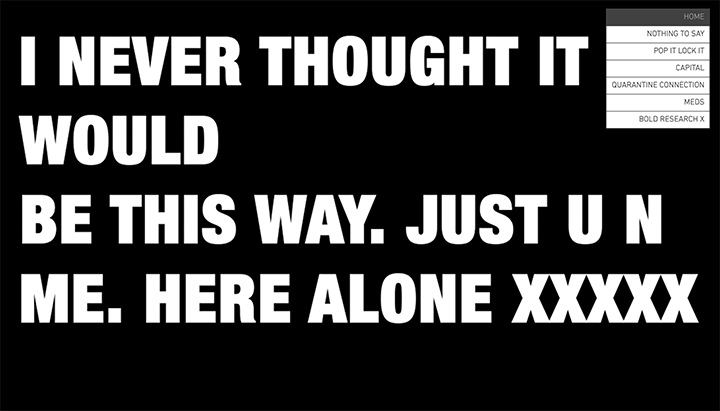
It’s been an extraordinary time for the arts and art education. Away from our galleries, our studios, tutors and peers, art lovers and artists have had to find new avenues to share our practices and ideas with the world. How have the last few months been as students and art makers?
Challenging but exciting. I think that as artists our brains function in a way that allows us to cope with change and view it as something to fuel our work and then we can channel whatever emotions we feel into our work creating a level of authenticity that also adds value to our work.
Do you have any advice for those starting creative degrees in the coming year? Particularly if aspects of their courses will involve remote learning.
Take every opportunity you can, just because they’re online and maybe not in a traditional format doesn’t mean they aren’t as good – often they can be better! As an artist you’re built to survive a challenge and probably thrive under difficult circumstances. You can do it!
And finally! When the world slowly moves towards normality, what’s next on the horizon for you?
Very exciting things! I have residencies coming up and some other exciting work in the making. Keep your eyes peeled!
Phoebe O'Connor
Phoebe O'Connor, The Subtle Knife
Could you introduce us to your practice, what materials do you love to work with, or particular themes you explore?
Fundamentally, I am an abstract painter but have begun to incorporate installation into my practice this year. The physicality of painting is important to me and is what I truely love to do, which is why it is the foundation to all of my work. I mostly use oil paint with the main focus being on colour placement. I also enjoy using projection to create environments for my paintings. My piece for the Degree Show On Mars was an installational takeover of my kitchen which had been my make-shift studio space during lockdown.
And – taking the last six months aside for a moment! How did you find your studies as a creative student, how did you work grow and develop over the years?
I can't praise the LJMU Fine Art course enough! The experience has been incredible, the tutors always go the extra mile to help you and the social aspects of the course such as holding and attending various exhibitions, clubs etc are fantastic. I came to LJMU with no idea of what my artistic passion was and over the course of the three years became an artist confident in my own practice.
It’s been an extraordinary time for the arts and art education. Away from our galleries, our studios, tutors and peers, art lovers and artists have had to find new avenues to share our practices and ideas with the world. How have the last few months been as students and art makers?
Challenging but rewarding! Before Covid, I already had an idea of what I wanted to create for the degree show and how I was going to display the work. Lockdown has allowed me to surprise myself and open my eyes to a whole new range of possibilities for my practice.
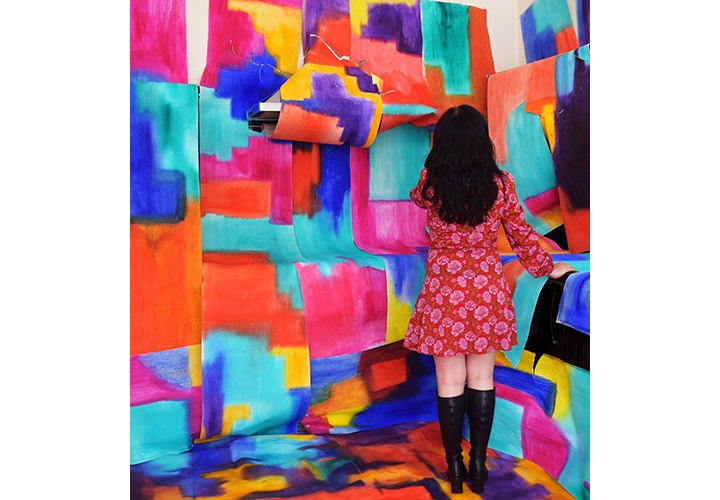
Do you have any advice for those starting creative degrees in the coming year? Particularly if aspects of their courses will involve remote learning.
Be social! I find that conversation with other creatives is everything! Try and stay in touch with others on the course even if it is just in a Facebook/Whatsapp chat. Hold shows/exhibitions on social media platforms or websites... anything is possible these days with the beauty of the internet. Another important thing is don't be afraid to reach out to your tutors or other creatives and ask for help/advice. As artists, we all struggle sometimes, it's nothing to be ashamed of.
And finally! When the world slowly moves towards normality, what’s next on the horizon for you?
My friend Kirsty Jo Wallace and I have been awarded a residency in The Royal Standard for 2021 which is exciting! We are hoping that things will be back to normal by then and we can hold exhibitions which people will be able to come and view. We are also part of a larger group who have held exhibitions over the past couple of years in different venues so we will most likely continue to do that as well! I'm a bit nervous for life after uni but mostly excited to see what the future has in store!
Nicole Stiff
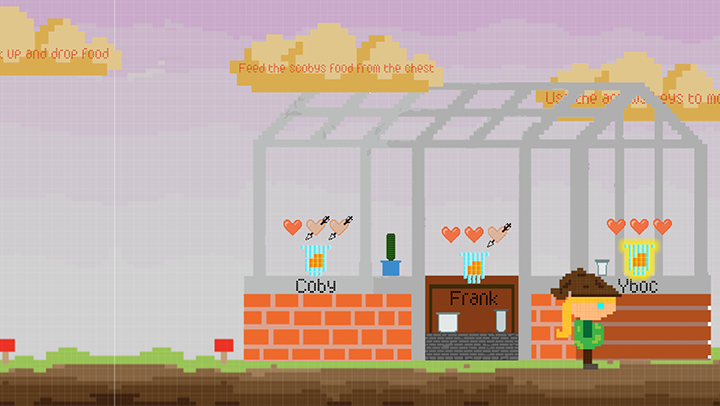
Could you introduce us to your practice, what materials do you love to work with, or particular themes you explore?
My practice centres around conversation and collaboration, always engaging with themes of performance as research as well as artistic play. My work is often about anthropomorphising objects to create narratives, this is done through long durational performances more recently these have been designed to entice the audience into playing. For my most recent work I set up a S.C.O.B.Y (symbiotic community of bacteria and yeast) Adoption Agency, which involved people filling out adoption forms, which once approved by the agency, meant they could take home and name their very own S.C.O.B.Y child. I would run weekly feeding sessions where all the adoptive parents would bring their children and chat together about their S.C.O.B.Ys and their health. This eventually led to the video game, Scoby Afterlife, which I presented in our Degree Show on Mars.
And – taking the last six months aside for a moment! How did you find your studies as a creative student, how did you work grow and develop over the years?
Being an art student has been the best three years of my life so far. The course at LJMU allowed for freedom, collaboration and exhibitions, all things which helped my practice to develop to where it is today. Liverpool as a city is also amazing for any type of creative student, it has amazing independent venues/facilities that encourage young creatives to thrive and showcase their work. I’ve always been interested in performance and fascinated by rotting jars, and through the three-year course I have learnt to refine my work and ideas, as well as learning how beneficial collaboration is.
It’s been an extraordinary time for the arts and art education. Away from our galleries, our studios, tutors and peers, art lovers and artists have had to find new avenues to share our practices and ideas with the world. How have the last few months been as students and art makers?
The past few months have been challenging but have also provided an excellent time to get creative with the way we share our work with the world. And while working digitally isn’t always the most practical, it can be highly effective in sharing your work with a wider audience. For example, in the first few months of lockdown I curated an online exhibition called Quarantine Connections, in which I invited a group of artists to use the platform of Google Streetview to take a 360 image of their quarantine workspace or artwork. This would then be uploaded to Google Streetview and displayed on a map of all the art venues in Liverpool, each venue being assigned to an artist which when clicked brings you to their 360 image for you to explore. This allowed us to exhibit all over Liverpool without leaving our houses. https://nicolestiff2.wixsite.com/quarantineconnection

Do you have any advice for those starting creative degrees in the coming year? Particularly if aspects of their courses will involve remote learning.
My advice would be to think positively and not come into the degree thinking it’s going to be rubbish because its online, as remote learning will allow you to come up with solutions to problems that other artists haven’t had to deal with and will perhaps lead to new and more exciting work.
And finally! When the world slowly moves towards normality, what’s next on the horizon for you?
I was awarded a residency at The Royal Standard ( TRS ) and am excited to spend time with them, here I hope to develop my practice further and learn from the artists based there.
Ashleigh Sands and Ella Crabtree

It’s been an extraordinary time for the arts and art education. Away from our galleries, our studios, tutors and peers, art lovers and artists have had to find new avenues to share our practices and ideas with the world. How have the last few months been as students and art makers?
We lived together for the whole of lockdown. This meant our minds merged more than ever before. We had to overcome the obstacle of no studio and adapt to using our living room or garden or bathroom as a space to make work. Working together every day provided a routine and a sense of stability. The routine we slotted into actually made us the most productive we have ever been. We had a lot of support from our tutors and on top of once a week video calls, we were encouraged to contact any tutor whenever we felt it necessary. This support provided a bit of normality during the very abnormal times.
Could you introduce us to your practice, what materials do you love to work with, or particular themes you explore?
We are invested in the contextual research that surrounds our physical outcomes. Our research holds space under posthuman studies. Our enthusiasms lie in Transhumanist thinking and the coalescence with technology via virtual means, through the lens of gender. Our outcomes critically investigate how technology utilises the femme body. We work within the virtual realm.
And – taking the last six months aside for a moment! How did you find your studies as a creative student, how did you work grow and develop over the years?
Our minds merged and our obsession for Little Annie progressed into a full body of work surrounding C.P.R technology. Our experience studying has been very collaborative. This collaboration was initialised at the end of our first year and accelerated as we continued with the degree. Our individual practices now both thrive off our collaborative practice. c
Do you have any advice for those starting creative degrees in the coming year? Particularly if aspects of their courses will involve remote learning.
Look for patterns in the way you work when you are most creative- whether that be 9am or 12am, in the shower, cooking your tea or just before bed. Recognise these patterns and use them to your advantage. Wash your hands. Ask for as many tutorials as possible- this really helps not getting in your own head too much and voicing work or ideas always helps you figure out what you are trying to do more. Wash your hands. Organise crits with peers on your course- although it may be really intimidating early on it is a great way to get to know the ways people are working around you. Wash your hands.
And finally! When the world slowly moves towards normality, what’s next on the horizon for you?
The collaboration continues. We are currently taking part in a 6 month virtual residency for SPUR.WORLD. This is an online platform developed to help the graduating artists of 2020. We have an upcoming residency with The Royal Standard here in Liverpool, in which we are focusing on producing as many public outcomes as possible - whether that be in the physical or virtual realm. We also have a mentorship from Fatos Üstek, Liverpool Biennial director. We have two physical exhibitions in the pipeline in Liverpool, both in spaces that we haven’t shown in before.
-BA-Fine-Degree-Show-2020.png)

